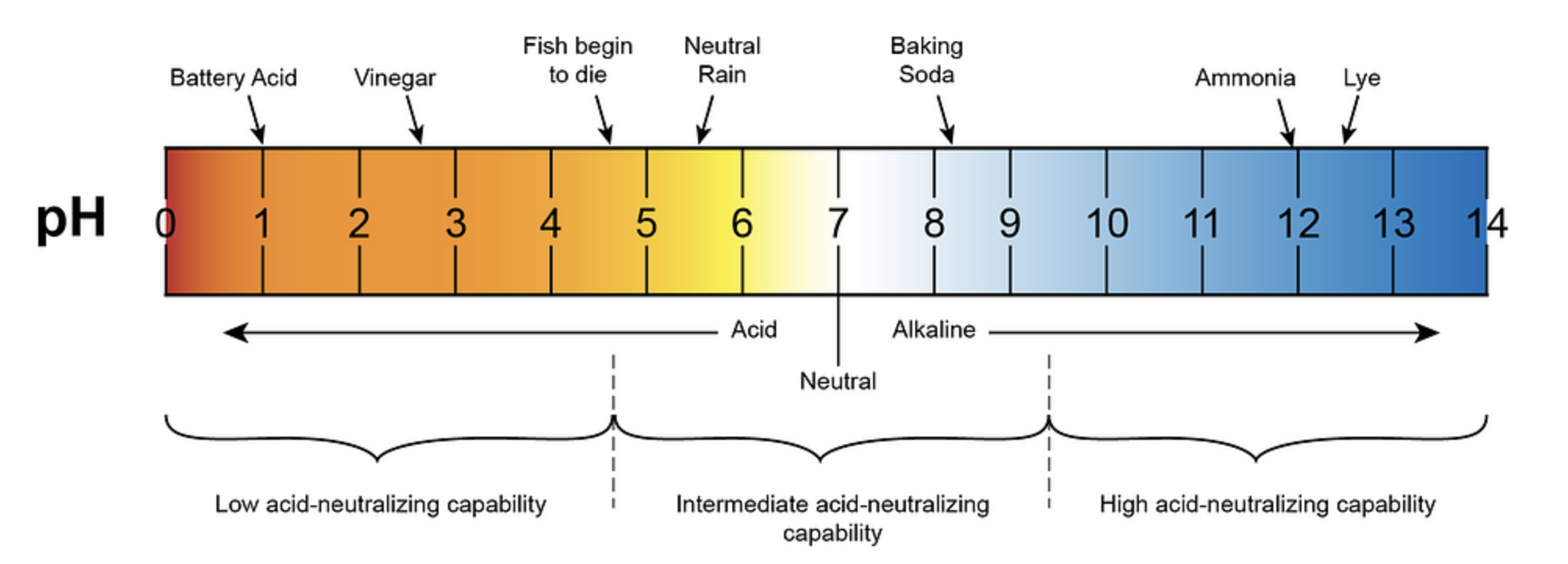The pH of aerated water is a crucial factor to consider, as it can have a significant impact on various aspects of water quality and usage. Typically, the pH of aerated water ranges from 4.22 to 9.61, with an average of around 6.81 for still water and 5.46 for carbonated water. Understanding the factors that influence the pH of aerated water is essential for maintaining a healthy and balanced water system.
The Impact of Aeration on Water pH
Aeration is a process that introduces air into water, which can affect the pH of the water due to the oxidation of dissolved minerals. When water is aerated, the dissolved minerals undergo a chemical reaction that reduces the number of electrons orbiting an element, increasing its positive valence. This, in turn, causes the element to attract electrons and bond with oxygen, forming insoluble compounds that can precipitate out of the water.
One common example of this process is the oxidation of iron. In its soluble state, iron exists as ferrous bicarbonate, Fe(HCO3)2, with a positive two valence. When the iron is oxidized during aeration, it develops a valence of positive three, forming ferric hydroxide, Fe(OH)3, which is insoluble and can cause the water to become cloudy or discolored. This process is more effective in alkaline water, as iron readily precipitates in these conditions.
Factors Affecting the pH of Aerated Water
The pH of aerated water can be influenced by several factors, including the presence of other chemicals or substances in the water. Understanding these factors is crucial for maintaining a healthy pH balance.
Dissolved Minerals
The presence of dissolved minerals, such as calcium, magnesium, and iron, can significantly impact the pH of aerated water. As these minerals undergo oxidation during aeration, they can form insoluble compounds that can affect the water’s pH.
Phosphates
Phosphates are another substance that can lower the pH of aerated water, making it more acidic. Phosphates can be introduced into the water through various sources, such as detergents or fertilizers.
Chlorine
Chlorine is commonly used as a disinfectant in water treatment processes. However, the presence of chlorine can also lower the pH of aerated water, making it more acidic.
Organic Matter
The presence of organic matter, such as decaying plant or animal matter, can also affect the pH of aerated water. As the organic matter decomposes, it can release acids that can lower the pH of the water.
Balancing the pH of Aerated Water
To maintain a healthy pH balance in aerated water, it is essential to understand the chemical properties of the water and the elements it contains. This knowledge can help in the design and implementation of effective water treatment systems.
Aeration Tank Design
One effective way to balance the pH of aerated water is through the design of the aeration tank. The tank should be sized appropriately, with a well-designed inlet diffuser that allows the water to spray into a pocket of air at the upper one-third to one-half portion of the tank. This design helps to facilitate the precipitation of insoluble compounds, such as iron, which can then be filtered out successfully using a variety of filter media.
Regular pH Testing and Adjustment
Regularly testing the pH of aerated water and making adjustments as needed is crucial for maintaining a healthy pH balance. This may involve the addition of pH-adjusting chemicals or the use of other water treatment methods, depending on the specific needs of the water system.
Conclusion
The pH of aerated water is a complex and multifaceted topic, with various factors influencing its balance. By understanding the impact of aeration on water pH, the role of dissolved minerals, phosphates, chlorine, and organic matter, and the importance of proper aeration tank design and regular pH testing, water treatment professionals can effectively maintain a healthy pH balance in aerated water systems.
References:
- McGill University. (n.d.). Is Carbonated Water Bad for Your Teeth? Retrieved from https://www.mcgill.ca/oss/article/health/carbonated-water-bad-your-teeth
- Pure Water Products, LLC. (n.d.). Aeration and pH. Retrieved from https://www.purewaterproducts.com/articles/aeration-and-ph
- Figueiredo, L., Simões, J., Lopes, A., & Marto, J. (2019). pH analysis of still and carbonated bottled water: Potential influence on dental erosion. Journal of Applied Oral Science, 27. Retrieved from https://www.ncbi.nlm.nih.gov/pmc/articles/PMC6443524/
- THCFarmer. (2021). aerated water at 8.6 ph. Retrieved from https://www.thcfarmer.com/community/threads/aerated-water-at-8-6-ph.114524/
- Trouble Free Pool. (n.d.). Why does aeration cause an increase in ph? Retrieved from https://www.troublefreepool.com/blog/2019/01/18/why-does-aeration-cause-an-increase-in-ph/

